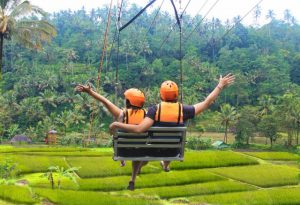Japan’s 10 best ryokan and top 10 hotels, as chosen by foreign visitors

By Casey Baseel —–
TOKYO: Japan gets more and more visitors from abroad every year. Thankfully, the country has plenty of amazing accommodation, as shown by this list of the top 10 inns and hotels in Japan, as picked by foreign travelers.
Travel website TripAdvisor JP recently released the results of its latest annual survey of the highest-rated ryokan (Japanese inns) and modern-style hotels in Japan, as determined by user reviews. TOP Ryokans –
10. Gora Kadan (Kanagawa, Hakone)
As Japan’s onsen culture continues to gain fans overseas, places like Gora Kadan, nestled in the mountains of the hot spring resort of Hakone, are seeing a boom in their popularity with foreign travelers.
9. Motonago (Kyoto)
It’s hard to pick a better city for a ryokan stay than Kyoto, and hard to pick a better part of the city than the tranquil and temple-filled Higashi Yama district. Satisfied guests of Motonago report being “pampered from the moment we arrived” and rooms with “not a speck of dirt or dust anywhere.”
8. Senshinkan Matsuya (Nagano, Shimotakai-gun)
Many ryokan have their own hot springs, but very few will give you a key that lets you access nine other baths around the town. Senshinkan will, plus the staff is always happy to drive guests up to see the residents of the nearby Snow Monkey Park.
7. Yudanaka Onsen Seifuso (Nagano, Shimotakai-gun)
Nagano makes the list again with Seifuso, an inn run by an elderly couple with relaxing outdoor baths (and yes, they’ll also take you to the monkey park if you ask).
6. Shimizu Ryokan (Oita, Yufu)
TripAdvisor users made Shimizu Ryokan their top pick for Oita, colloquially known as the Hot Spring Prefecture. No surprise then that the ryokan drew praise for its onsen, as well as the friendly and personable service of its English-speaking owner.
5. Yama no Chaya (Kanagawa, Hakone)
Back in Hakone again, the Yama no Chaya drew praise for its steaming-hot natural baths, plus the memorable approach to the property which has guests crossing a bridge suspended over a mountain stream.
4. Family Inn Saiko (Tokyo)
Staying in a ryokan doesn’t mean you have to head out into the countryside and pay exorbitant prices. The Family Inn Saiko is just one subway stop away from Ikebukuro, one of Tokyo’s liveliest neighborhoods, and has rooms starting at 7,400 yen (US$64) a night, which includes breakfast.
3. Biyo no Yado (Nagano, Yamanouchi-machi)
Nagano’s highest-rated ryokan elicited praise not just for its serene atmosphere, impeccable cleanliness, and excellent course meals.
2. Sawanoya Ryokan (Tokyo)
This family-run ryokan in Tokyo’s Taito Ward has been around since 1949, and rebounded from a slump in the 1970s by specializing in special services for foreign travelers, such as writing out directions they can show to taxi drivers when heading out to do some sightseeing. Sound like a great story? It is, which is why it’s also the subject of a book, translated into English as Welcome to Sawanoya, Welcome to Japan.
1. Ryouri Ryokan Shiraume (Kyoto)
Japan’s former capital takes the ryokan crown with the Shiraume. Meaning “white plum,” the inn’s name references its two century-old plum trees, and both the inn and the teahouse which previously occupied the grounds have been impressing visitors for centuries, including a famous poet whose calligraphy still decorates one of its rooms.
TripAdvisor users’ 10 favorites Hotels –
10. The Capital Hotel Tokyu (Tokyo)
The first of many Tokyo hotels in the top 10, the Capital Hotel Tokyu is located within walking distance of historical Hie Shrine, the Imperial Palace, and the National Diet Building.
9. St. Regis Hotel (Osaka)
Many travelers skip over Osaka, choosing instead to spend the night in nearby Kyoto. They miss out on a chance to stay at the St. Regis, though, where the service is so thorough that one guest gushed that “every small requirement is taken care of.”
8. Conrad Tokyo (Tokyo)
Really, how can you not like a hotel designed with such attention to detail the shampoos have different scents depending on whether your room faces the financial district city or Tokyo Bay?
7. Kozantei Ubuya (Yamanashi, Fuji Kawaguchi Komachi)
As if its location next to beautiful Lake Kawaguchi-ko wasn’t enough, Ubuya also has suites with attached outdoor baths where you can admire Mt. Fuji from the tub.
6. Shangri-La Hotel Tokyo (Tokyo)
A tranquil slice of paradise in the capital, not only is the Shangri-La situated near Tokyo Station, at least one guest unfamiliar with the rail system was escorted to the platform of his departing train by the hotel staff.
5. Intercontinental Hotel Osaka (Osaka)
One TripAdviser commenter described this hotel as a “7-star Zen luxury hotel.” If that vague yet flowery description is a little too vague, another dubbed it the “best hotel I have ever stayed at.”
4. Palace Hotel (Tokyo)
Sure, the name comes from the location, which is across the street from the home of Japan’s imperial family. You could just as easily make the case that it deserves its moniker because of the palatial accommodations of one of Tokyo’s most established and distinguished luxury hotels.
3. Park Hyatt Tokyo (Tokyo)
It probably got a bit of a bump from serving as the backdrop for much of the film Lost in Translation, but the Park Hyatt has more than its movie credit to fall back on. Conveniently situated in Shinjuku, guests rave about its restaurants, bar, and beauty spa, so much so that one described it as a “hotel that you wouldn’t want to leave.”
2. Hotel Mume (Kyoto)
Located in Kyoto’s exclusive Gion neighborhood, Mume’s staff earned the endorsement that they “will move heaven and earth” to make you stay as pleasant as possible. The boutique hotel only has seven guestrooms, though, which is why one traveler recommended booking your room here first, and then booking your flight to Japan afterwards.
1. Mandarin Oriental Tokyo (Tokyo)
Finally, topping the list of hotels is Tokyo’s Mandarin Oriental. Even among a chain known for its luxurious amenities, the hotel stands out, with incredible views and gourmet dining featuring eggs laid by chickens given a special diet of flowers to enhance their color.
The only downside seems to be the rates, which start at 43,000 yen a night. Still, as one TripAdvisor user commented, “If I could afford it, I would live at the Mandarin Oriental for the rest of my life.”
Sources: IT Media, Travel Voice, TripAdvisor
Dec. 8, 2014















